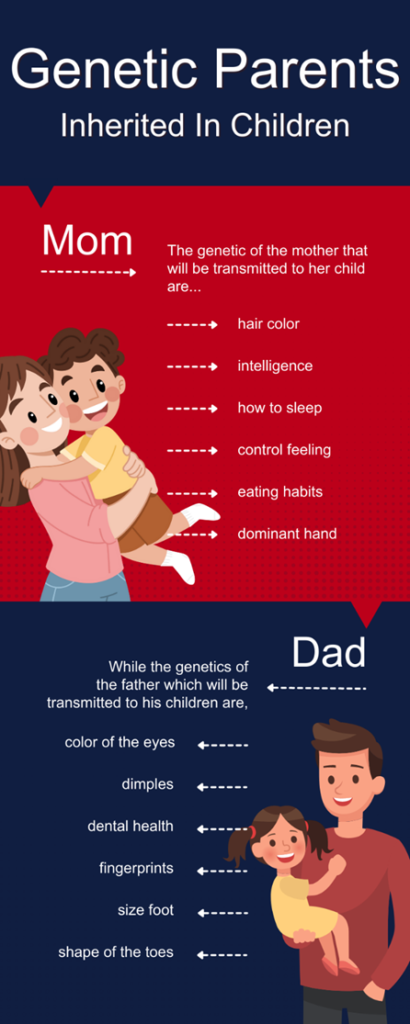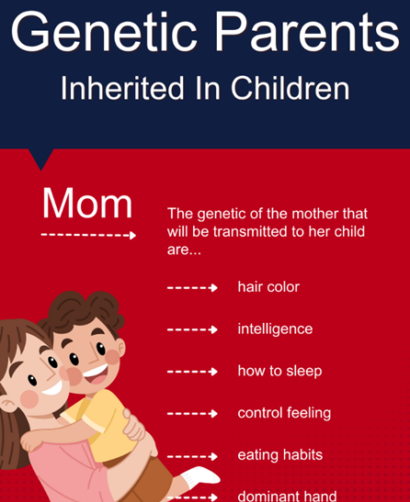Genetics play a role in a child’s development from the very first phase of conception in the mother’s womb. Almost all of the genes within a child are hereditary from its parents, which can be referred to as genotype. While, the other part of the genes which can be easily identified can be called as phenotype. These include physical traits such as color of eyes, height, hair color, and non-physical traits such as personality traits such as introverts or extroverts.
There are two major types of interactions of how genes are expressed and they are divided into genetic interaction and gene-environmental interaction.
Genetic interaction: a broad term used to describe different genes joining together to determine phenotypic variability. For example: If you have one parent with a trait of brown eyes (dominant trait), and another with a trait of blue eyes (recessive trait), the dominant trait will take over, and the baby will likely to be passed on with a dominant trait of brown eyes.
Another simple example for a genetic interaction is the blood trait that is inherited from both parents to a child. Both blood types “A” and “B” are dominant traits, however, “O” is often referred to as a “null” or recessive trait. Therefore, if one of the parents have either “A” or “B” dominant trait and another has “O”, the child would probably have “A” or “B” blood type. For a child to receive “O” recessive blood type, both parents will have to have “O” blood type. Please refer to the illustration of the blood type distribution grid shown at the end of this posting below.
Gene-environmental interaction: a term used to describe how environmental factors may affect the outcome of a child’s trait or gene. Height is one of the common examples for this type of interaction, and the environment plays a big role in determining how tall a child will grow up to. From my own example, both of my parents are about 163cm, but due to the good environmental factors provided to me, I grew to a height of 181cm.
It is important to note that no matter what type of genes we inherit from our parents, it may not be the final say in how we will become. As parents, our responsibility is to provide a safe, loving, and caring environment so that we can offer the best for our children. This includes taking precautions to prevent child hot car deaths, such as using products like “Baby Car Safe.”
“Baby Car Safe” is a cutting-edge device designed to prevent child hot car deaths. It uses advanced technology to monitor vehicle occupancy and send alerts to the parent’s phone if kids are left alone in the vehicle. By incorporating “Baby Car Safe” into your daily routine, you can take an extra step to ensure the safety of your child and prevent tragic incidents of child hot car deaths. Remember, genetics and environment both play a role in child development, and as parents, it’s our responsibility to provide a safe environment for our children to thrive.
Article references:
www.agtgenetics.com/blog/the-genetics-influences-on-child-development
www.sciencedirect.com/topics/neuroscience/gene-interaction


